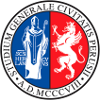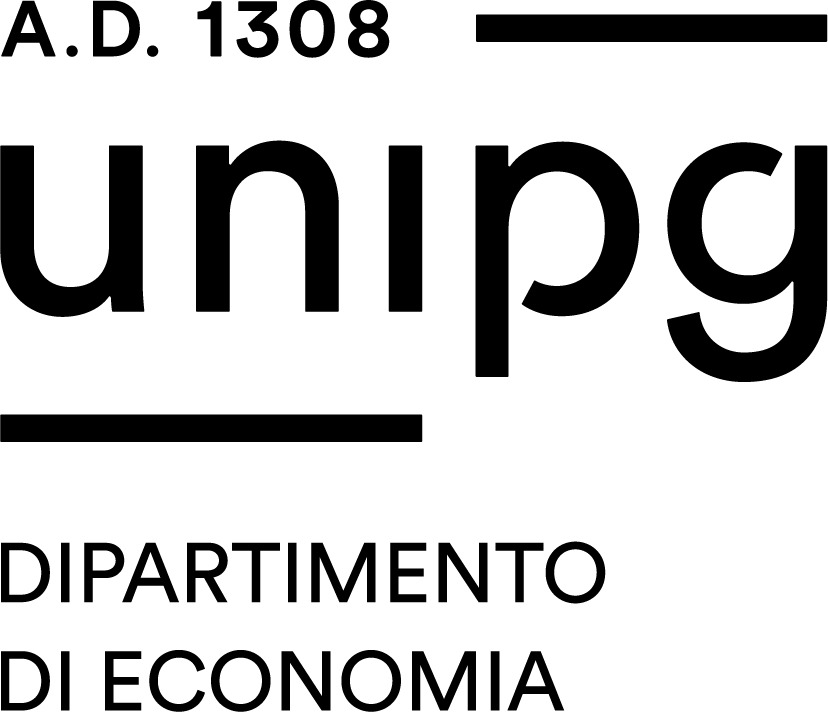Study-unit MEDICINAL CHEMISTRY II
| Course name | Pharmacy |
|---|---|
| Study-unit Code | 65004411 |
| Location | PERUGIA |
| Curriculum | Comune a tutti i curricula |
| Lecturers |
|
| Hours |
|
| CFU | 11 |
| Course Regulation | Coorte 2022 |
| Supplied | 2025/26 |
| Supplied other course regulation | |
| Learning activities | Caratterizzante |
| Area | Discipline chimiche, farmaceutiche e tecnologiche |
| Sector | CHIM/08 |
| Type of study-unit | Obbligatorio (Required) |
| Type of learning activities | Attività formativa monodisciplinare |
| Language of instruction | Italian |
| Contents | Introduction to general medicinal chemistry. The main molecular targets and mechanism of action of drugs. Drug discovery, design and development. |
| Reference texts | 2. Gasco A. Gualtieri F., Melchiorre C. - CHIMICA FARMACEUTICA (Ambrosiana – Zanichelli), 2020 (II Ed.) 3. G. Costantino, G. Sbardella - CHIMICA FARMACEUTICA (EdiSES), 2024 (I Ed.) 4. Foye’s - PRINCIPI DI CHIMICA FARMACEUTICA (Piccin), 2021 (VII Ed. - Traduzione della VIII Ed americana |
| Educational objectives | The fundamental objective of the course is a rational understanding, through knowledge of the chemical structure and chemical-physical parameters, of all the properties that characterise the drug, such as route of administration, absorption, distribution, metabolism, excretion, side effects, mechanism of action, drug-target interactions, structure-activity relationships, etc. |
| Prerequisites | In order to understand the topics covered by the teaching and achieve the learning objectives it is necessary to have acquired the knowledge of the chemical and biological basic courses. In addition, it is useful to have taken the exam of "General Pharmacology and Pharmacotherapy I" and it is indispensable to have successfully passed the exam of "Organic Chemistry" |
| Teaching methods | Lectures supported by PowerPoint presentations |
| Learning verification modality | The exam consists of an oral test of about 30-40 min. The oral test is designed to assess the level of knowledge attained by the student on the theoretical contents covered in the program, his/her logical reasoning, the ability to communicate appropriately organizing ideas and concepts logically and coherently. The evaluation is a minimum of 18 and a maximum of 30 with the possibility of honours. |
| Extended program | Pharmaceutical industry. Historical development of drugs. Drug nomenclature. ATC classification. WHO and list of essential drugs. CHEMOTHERAPEUTIC AGENTS Strategy in chemotherapy, host-parasite relationships. Drug resistance. History, chemical aspects/general properties, mechanism of action, structure-activity relationships (SAR), spectrum of action, therapeutic use, adverse reactions and general synthetic methods of the following classes of chemotherapeutic agents. ANTIBACTERIALS - Inhibitors of metabolic processes: Sulfonamides. Trimetoprim. Nitrofurans and nonbenzenoid nitro derivatives. - Inhibitors of bacterial cell wall biosyntheis: ß-lactam antibiotics. (penicillins, cephalosporins, oxacefems, carbapenems, monobactams and ß-lactamase inhibitors). Cycloserine. Bacitracin. Vancomycin and teicoplanin. - Antibacterials interfering with functionality of cytoplasmic membrane: polymyxins and tyrothricin. - Inhibitors of protein biosyntheis: Tetracyclines. Aminoglycosides. Macrolides. Chloramphenicol. - Antibacterials interfering with functionality of nucleic acids: Quinolones. Oxazolidinones. ANTIMYCOBACTERIALS - Antituberculosis first-line and secon-line agents. - Antileprosy agents: hints. ANTIPROTOZOAL DRUGS - Antimalrials (antimalarial drugs): Quinine and its synthetic derivatives. 4-Aminoquinolines. 8-Aminoquinolines. Acridines. Dihidrofolate reductase inhibitors. Artemisinin and its derivatives. Combination drug therapy. - Other antiprotozoals against trypanosomiasis, leishmaniasis and tricomoniasis ANTIFUNGAL DRUGS - Allylamines. Morfpholines. Flucytosine. Azoles. Griseofulvin. Polyenes, Echinocandins. ANTICANCER DRUGS - Alkylating agents: Nitogen mustards. Aziridines. Mitomycin C. Methanesulfonates. Procarbazine and dacarbazine. Nitrosoureas. Pt-complexes. - Antimetabolites: Aminoacid antagonists. Folic acid antagonists. Purine and pyrimidine antagonists. - Antimtotics: Vinca alkaloids. Taxanes. - Antibiotics: Anthracyclines. Dactinomycin. Bleomycins. (Mitomycin C) - Miscellaneus: Etoposide and teniposide. Champtothecins. Hydroxyurea. Asparaginase. Imantinib. Angiogenesis and cancer. ANTIVIRAL DRUGS - Amantadine. Interferon and interferon inductors. Purine and pyrimidine antagonists. Anti-HIV agents: Co-receptor inhibitors. Fusion inhibitors. Nucleoside and non-nucleoside RT inhibitors. Integrase inhibitors. Protease inhibitors. Combination drug therapy. CARDIOVASCULAR DRUGS History, chemical aspects/general properties, mechanism of action, structure-activity relationships (SAR), therapeutic use, adverse reactions and general synthetic methods of the following classes of drugs. CARDIOTONIC AGENTS - Cardiac glycosides. Non-glycoside drugs. ANTIARRHYTHMIC DRUGS - Na-channel blockers. ß-Adrenoceptor blocking agents. K-channel blockers. Ca-channel blockers. ANTIANGINAL DRUGS - Organic nitrates. (ß-Adrenoceptor blockers. Ca-channel blockers). ANTIHYPERTENSIVES - Antiadrenergic agents: Clonidine, a-methyldopa, guanetidine. a-Adrenoceptor blocking agents. ß-Adrenoceptor blocking agents. - Ca-channel blockers: Arylalkylamines. Benzothiazepines. Dihydropyridines. - K-channel openers. - Drugs acting on renin-angiotensin system: Renin inhibitors. Angiotensin-converting enzyme inhibitors. AT1-antagonists. DIURETICS - Osmotic diuretics. Carbonic anhydrase inhibitors. Thiazides and analogs. High-ceiling diuretics (aminobenzoic acid derivatives and fenoxyacetic acid derivatives). Potassium-sparing diuretics. ANTICOAGULANTS – Oral anticoagulants (cumarin derivatives), heparin and its forms, direct thrombin inhibitors, inhibitors of Xa. ANTIHYPERLIPOPROTEINEMICS and INHIBITORS OF CHOLESTEROL BIOSYNTHESIS – Inibitori HMG CoA reductase inhibitors, fibrates, bile acid sequestrants, ezetimibe, nicotic acid. ANTI-INFLAMMATORY DRUGS History, chemical aspects/general properties, mechanism of action, structure-activity relationships (SAR), therapeutic use, adverse reactions and general synthetic methods of the following classes of drugs. Steroidal anti-inflammatory drugs - Natural and semisynthetic glucocorticoides. Nonsteroidal anti-inflammatory drugs (NSAID) - Salicylates. Aniline derivatives. Fenamic acids. Arylalkanoic acids. Oxicams. COX-2 inhibitors. |
| Obiettivi Agenda 2030 per lo sviluppo sostenibile | Health and wellness; Quality education |


